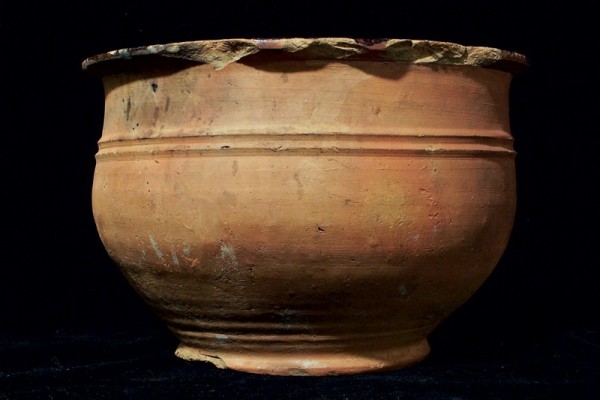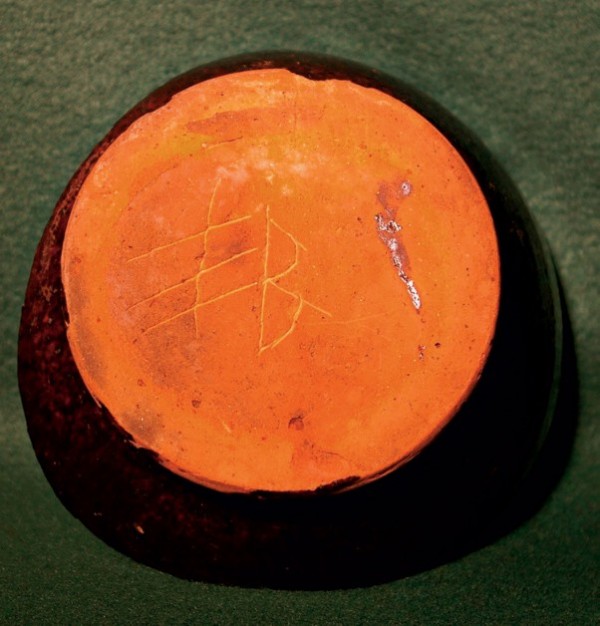
Chamber pot, Philadelphia, Pennsylvania, ca. 1750. Lead-glazed earthenware. H. 5 1/2". Mark: incised on bottom, “CN” (All photos, Mara Kaktins.)

Base of the chamber pot illustrated in fig. 1.

Chamber pot fragment, Philadelphia, Pennsylvania, ca. 1750. Lead-glazed earthenware. D. 3 3/4". Mark: incised on bottom, “X”

Basal fragment of pitcher or bottle, Philadelphia, Pennsylvania, ca. 1750. Lead-glazed earthenware. D. 3 3/4". Mark: incised on bottom, “EB”
Two unusual chamber pots and one pitcher/bottle fragment were recently recovered from a mid-eighteenth-century privy associated with the City Almshouse in Philadelphia. The privy is located in the basement of a town house erected in the fourth quarter of the eighteenth century at 310 Cypress Street and recently was excavated by Mara Kaktins, a graduate student at Temple University. The almshouse was abandoned in the late 1760s and the privy fill layer at the bottom of the feature was sealed at this time. The north wall of the late-eighteenth-century town house was carried over the span of the privy, which was more than eight feet in diameter, by a brick arch visible in the masonry. This feature was first excavated in the mid-1970s by John Cotter and David Orr, then at the University of Pennsylvania.[1] The distinctive privy deposit of this large feature was first uncovered in 2006 by Kaktins. The two incised chamber pots (among the thirty discovered!) were uncovered in this layer. An impressive array of artifactual and organic material associated with the almshouse has been recovered and will be described in a future study.
The first chamber pot is a red earthenware vessel measuring 8 inches in diameter at the mouth, 4 1/2 inches at the base, and 5 1/2 inches in height (figs. 1, 2). It has a dark-brown metallic lead glaze on the inside and, unexpectedly, the initials “CN” appear on the exterior base of the pot, apparently inscribed after it was fired. The base exhibits heavy wear that partially impacts the upper right portion of the “N.” A portion of a similar chamber pot, also excavated from the feature, displays a quickly scratched “X” on the base, inscribed after firing (fig. 3). One other red earthenware lead-glazed vessel fragment, possibly a pitcher or bottle, was also incised on its base, with the initials “EB” (fig. 4). Could these initials indicate the vessels’ owner?
ACKNOWLEDGMENTS
A special thanks to Ellen Miller, whose support and inquisitive nature made the excavation at Cypress Street possible. Thanks also to Temple University colleagues Joseph Blondino and Matt Olson, who assisted in the excavation.
Mara Kaktins, Ph.D. Candidate, Temple University; kaktins@temple.edu
David G. Orr, Assistant Professor, Temple University; daveorr@temple.edu
John L. Cotter, Daniel G. Roberts, Michael Parrington, The Buried Past: An Archaeological History of Philadelphia (Philadelphia: University of Pennsylvania Press, 1992), pp. 181–84.
